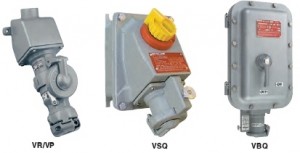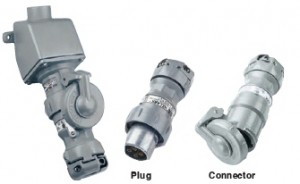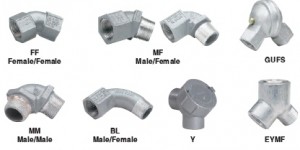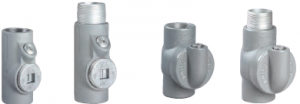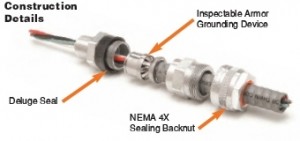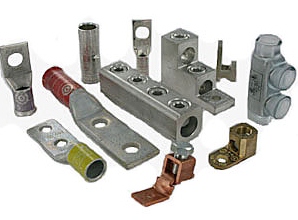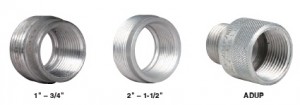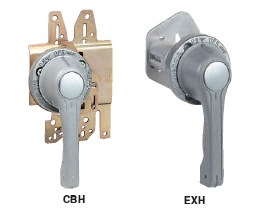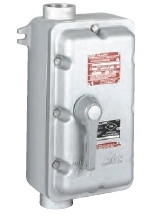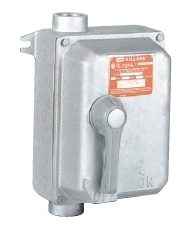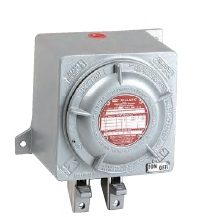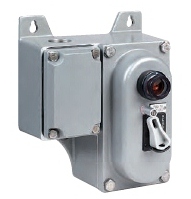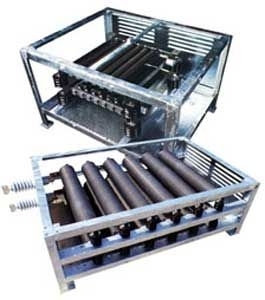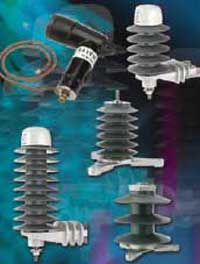Our portfolio includes the following electric components:
- Liquid Tight Conduits & Fittings
Liquid Tight Conduit & Fittings are designed for applications with continuous flexing, vibration and corrosive environments. These Products offer leak-proof integrity on motors, processing equipment, pumps, packaging equipment and in marine applications.
The Liquid Tight Conduits are flame retardant and oil, mild acid and ultraviolet resistant and, with no metal core, will resist fatigue from flexing and vibration.
- Push & Pull Button Mechanisms and Control Units
The Control Units are the most commonly used configurations, including combinations of pilot lights, push buttons and selector switches.
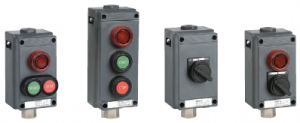
- Handle Operators
- Explosion Proof Receptacles & Plugs
Explosion Proof Receptacles & Plugs are designed for heavy duty industrial use. These devices supply power to both fixed and portable electrical equipment including pumps, generators, welders, vacuums, blowers and similar apparatus. Suitable for indoor and outdoor use. Applications include the wet, cold, hosedown, hazardous or corrosive areas.
- Conduit Fittings for Standard and Hazardous Areas: Conduit Bodies, Conduit Hubs, Elbows, Sealing Fittings, Unions, Plugs, Nipples, Drains and Breathers, Reducing Bushings, Flexible Couplings, Cable Glands, Aluminum Lugs, Bushings and Adaptors.
Conduit Bodies provide access to conductors for pulling, splicing, and maintenance. Threaded for rigid conduit and IMC.
Conduit Hubs provide a liquid tight, oil tight and dust tight termination of electrical conduit through the walls of sheet metal enclosures. The hubs fit into standard knock-out dimensions.
Elbows change direction in rigid or IMC conduit systems.
Sealing Fittings minimize the passage of gasses and vaoprs and prevent the passage of flames from one electrical installation to another through the conduit system.
Unions are used to connect two pieces of conduit or attach conduit to junction boxes, fittings, or devices. They also permit removal of equipment without turning or removal of conduit.
Plugs are used to close up a taped hole or hub.
Nipples are designed to connect threaded on IMC conduit to cast hubs on drilled and tapped conduit openings.
Drains & Breathers are designed for use 1/2″ hubs or 1/2″ drilled and tapped conduit openings. When installed in the top of an enclosure, these fittings act as breathers. Bottom installations permit water to drain from inclosure continuously.
Flexible Couplings are for use in hazardous areas where movement or vibration requires a flexible connection or a difficult bend is required in a conduit system.
Cable Glands provide a barrier seal between the individual insulated conductors within the cable and prevent entry of the products of an exposion into the cable.
Aluminum Lugs and Splices are for use as wire terminals, splicing, reducing and grounding in electrical panels.
Bushing and Adapters are used to reduce the trade size of a taped hole or hub.
- Circuit Breaker Handles
Circuit Breaker Handels may be used to activate circuit breakers, motor circuit protectors, and nonfusible disconnects. Complete handle mechanisms include external handle and lockout, internal switching mechanism, and adjustable shaft.
- Terminal Blocks
Terminal Blocks are used in connecting and in arrangement of control wiring for control panel and switchboard applications.
- Electrical Distribution Equipment: Circuit Breakers, Disconnect Switches, Panelboards, Load Centers, Ground Fault Control Station
Circuit Breaker Enclosures are designed for hazardous areas due to the presence of flammable gases or vapors, combustible dusts, or easily ignitable fibers or flyings. These enclosures are usually installed at petroleum refineries, chemical and petrochemical plants, storage areas, and other processing facilities where hazardous substances are handled or stored. Circuit Breaker Enclosures provide overcurrent and short circuit protection of service entrance, feeder or branch circuits, lighting, heating, appliance and motor circuits.
Disconnect Switches are also used in hasardous areas at feedmills, grain elevators, coal handling facilities, certain chemical, fertilizer and food processing industries where either hazardous or non-hazardous dusts are handled or stored.
Circuit Breaker Panelboards are applicable in hazardous locations and areas subject to corrosion, weather and dampness at petroleum refineries, chemical and petrochemical plants with indoor and outdoor processes.
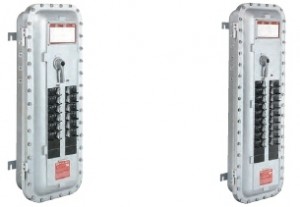
Circuit Breaker Load Centers are for indoor or outdoor hazardous areas where flammable gases or vapors, combustible dusts, or easily ignitable fibers or flyings may be present. These centers provide overcurrent and short circuit protection of branch lighting, heating and appliance circuits.
Ground Fault Control Stations are used for the additional safety of personnel, and for equipment protection in remote areas.
- Grounding Resistors
Grounding Resistors are used for resistance grounding of industrial power systems. Their primary puropse is to limit the maximum fault current to a value which will not damage generating, distribution and other associated equipment in the power system, yet allow sufficient fault current to flow to operate protective relays to clear the fault.
- Ground Monitors
Ground Monitors help to detect broken ground or pilot wwire in mine power cables, defective electrical system circuit connections, etc. They may also be used in other industries for similar applications and is particularly useful for continuous monitoring of low impedance circuits that can experience large induced ac noise voltages.
- Fuses and Bases
- Grounding Systems
- Electrical Substation Components: Transformers, Arresters,
Resistors, Screens, Radios, etc.
Indoor Voltage Transformers are designed for indoor service; suitable for operating meters,instruments, relays and control devices.
Arresters protect against over voltages caused by lightning or switching. The arrester’s most important application criterion is the maximum voltage which can be continiously applied.


